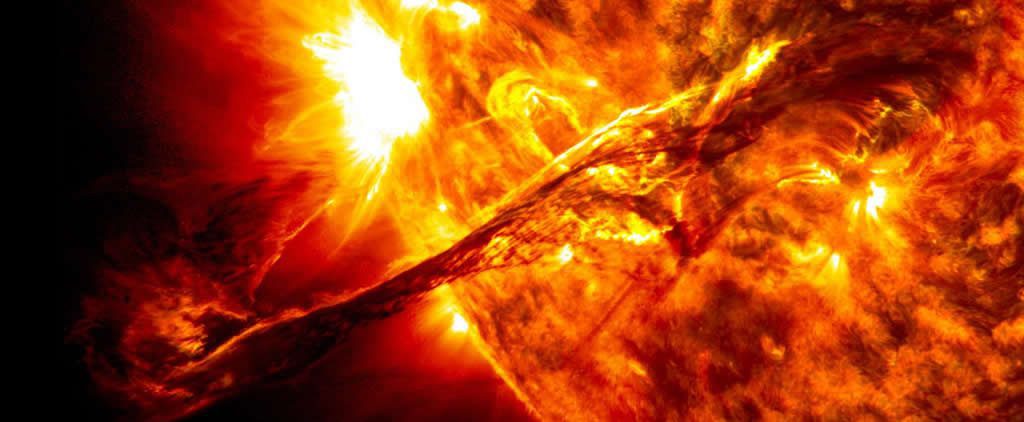[dropcap style=”font-size:100px;color:#992211;”]S[/dropcap]olar flares, cosmic radiation, and the Northern Lights are well-known phenomena. But exactly how their enormous energy arises is not as well understood. Now, physicists at Chalmers University of Technology, Sweden, have discovered a new way to study these spectacular space plasma phenomena in a laboratory environment.
“Scientists have been trying to bring these space phenomena down to earth for a decade. With our new method we can enter a new era, and investigate what was previously impossible to study. It will tell us more about how these events occur,” says Longqing Yi, researcher at the Department of Physics at Chalmers.
The research concerns so-called ‘magnetic reconnection’, which causes sudden conversion of energy stored in the magnetic field into heat and kinetic energy. This happens when two plasmas with anti-parallel magnetic fields are pushed together, and the magnetic field lines converge and reconnect. The interaction leads to violently accelerated plasma particles that can sometimes be seen with the naked eye, for example, during the Northern Lights.
Magnetic reconnection in space can also influence us on earth. The creation of solar flares can interfere with communications satellites, and thus affect power grids, air traffic and telephony.
In order to imitate and study these phenomena in the laboratory, a high-power laser is needed to create magnetic fields around a million times stronger than those found on the surface of the sun. In the article, Longqing Yi, along with Professor Tünde Fülöp, proposed an experiment in which magnetic reconnection can be studied in a new, more precise way. Through the use of grazing incidence of ultra-short laser pulses, the effect can be achieved without overheating the plasma. The process can thus be studied very cleanly, without the laser directly affecting the internal energy of the plasma.
The proposed experiment would allow us to seek answers to some of the most fundamental questions in astrophysics.
“We hope that this can inspire many research groups to use our results. This is a great opportunity to look for knowledge that could be useful in a number of areas. For example, we need to better understand solar flares, which can interfere with important communication systems. We also need to be able to control the instabilities caused by magnetic reconnection in fusion devices,” says Tünde Fülöp.
The study on which the new results are based was financed by the Knut and Alice Wallenberg foundation, through the framework of the project ‘Plasma-based Compact Ion Sources’, and the ERC project ‘Running Away and Radiating’.
Source: EurekAlert! / Nature Communications
Image: NASA / SDO /AIA / Goddard Space Flight Center

Naila Scargill is the publisher and editor of horror journal Exquisite Terror. Holding a broad editorial background, she has worked with an eclectic variety of content, ranging from film and the counterculture, to political news and finance.




















